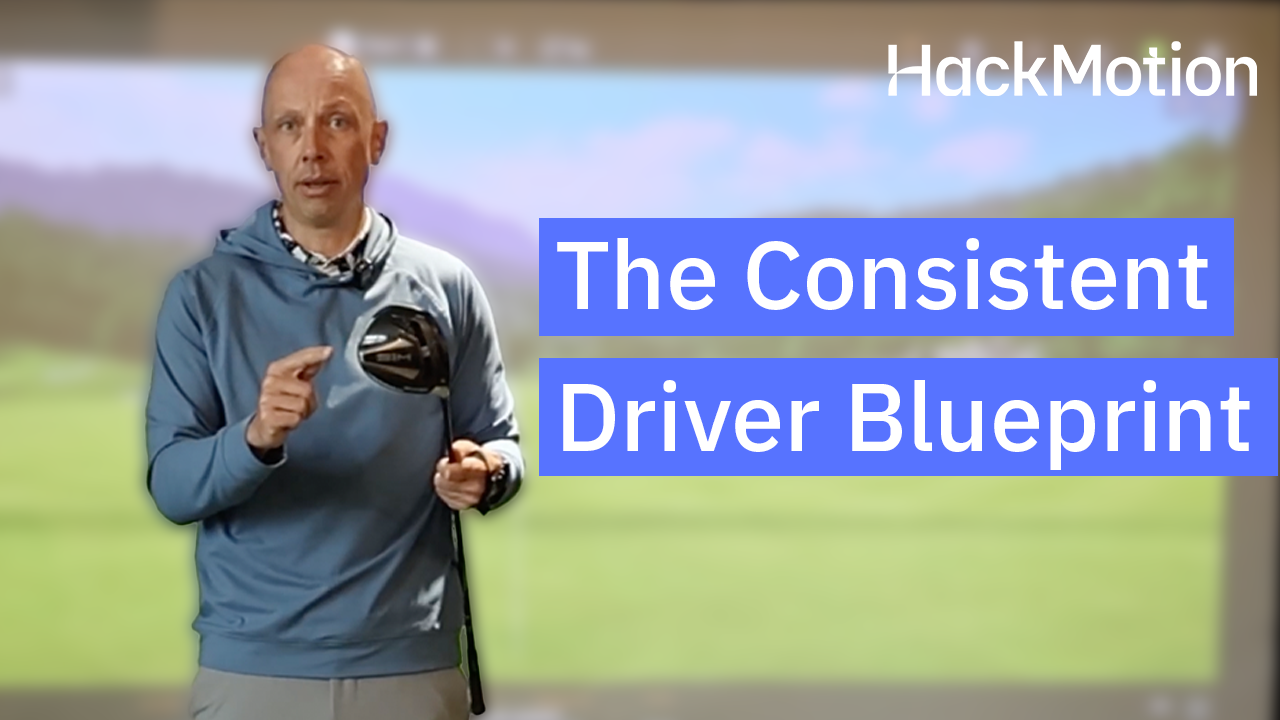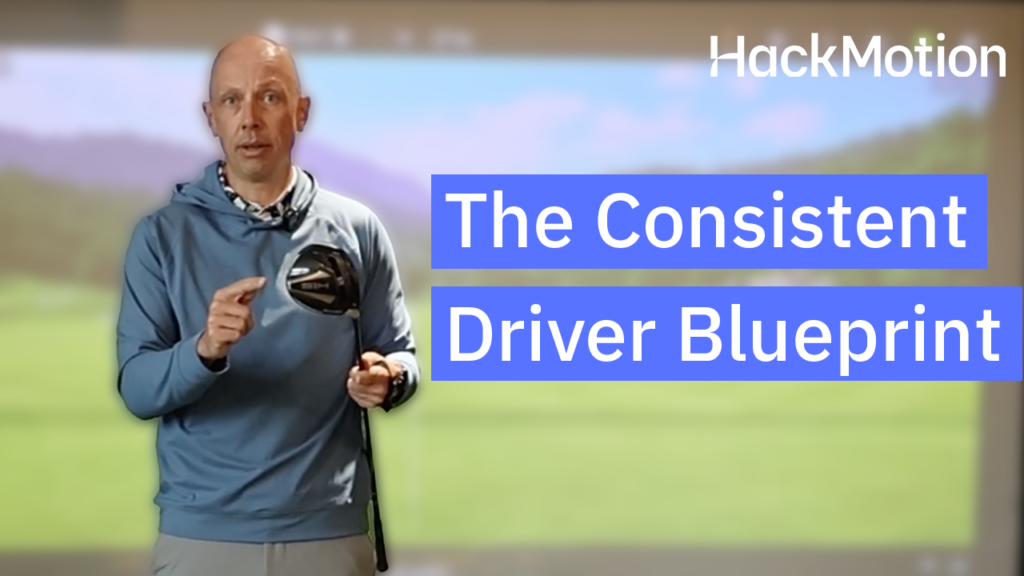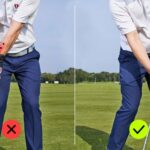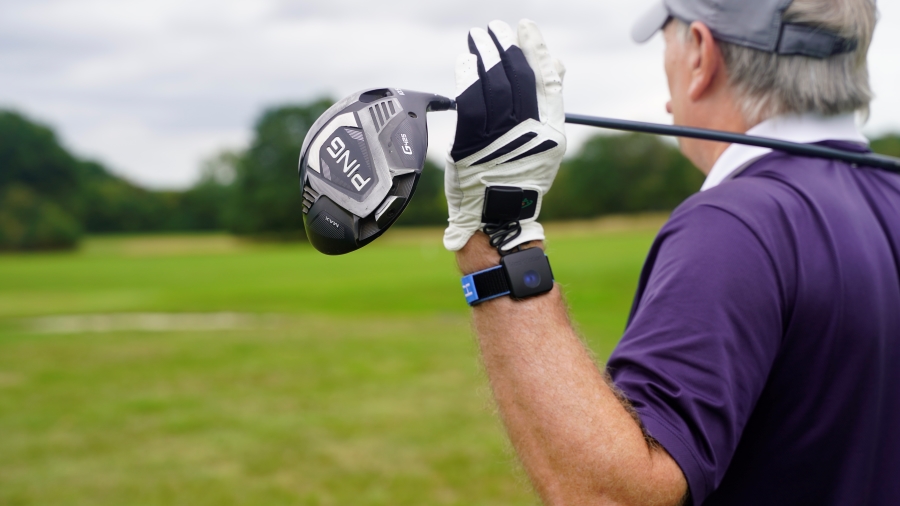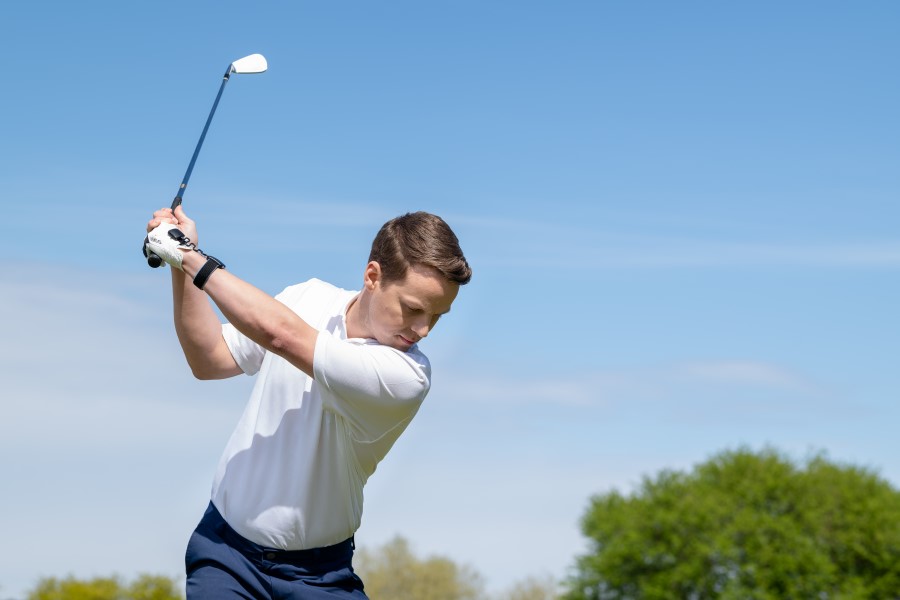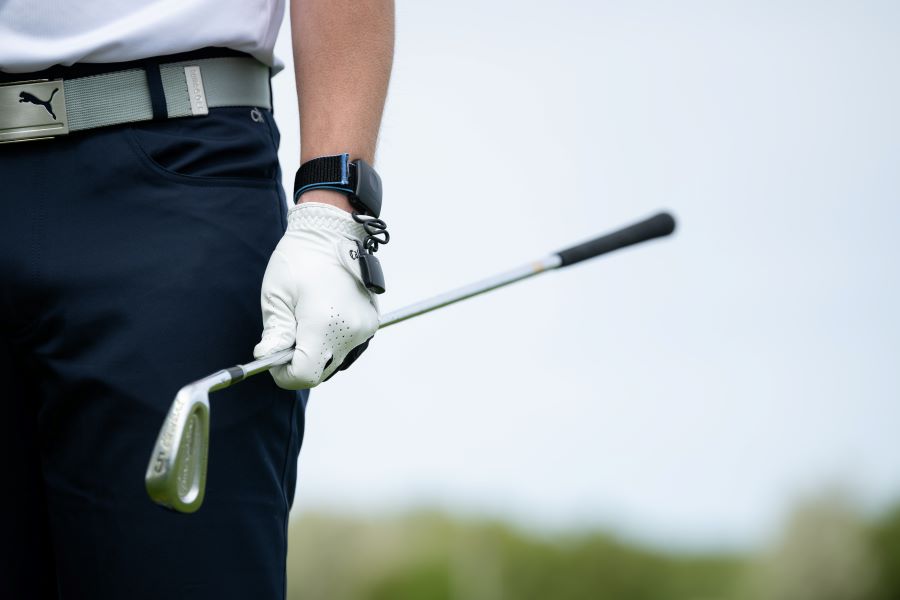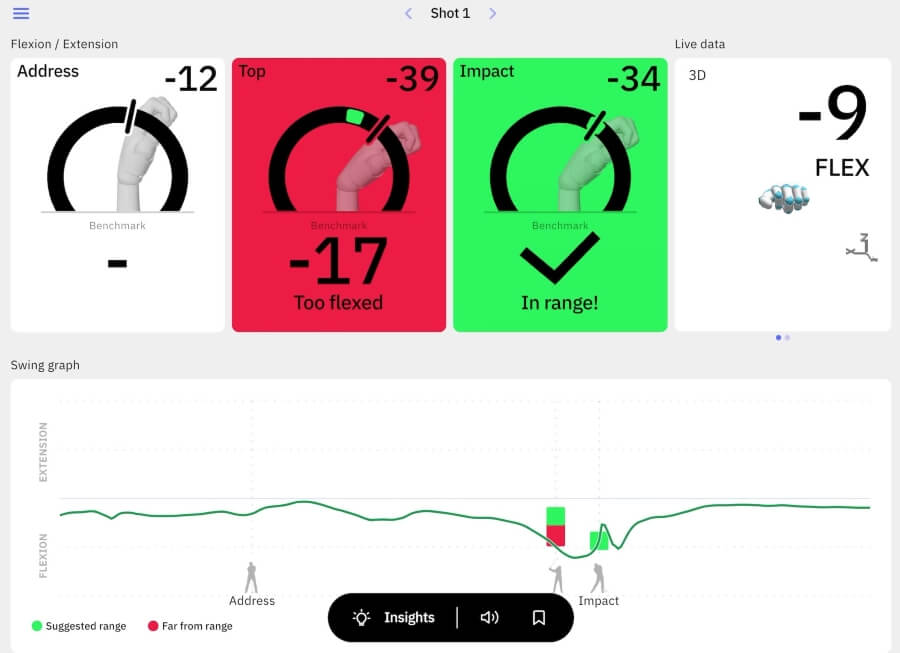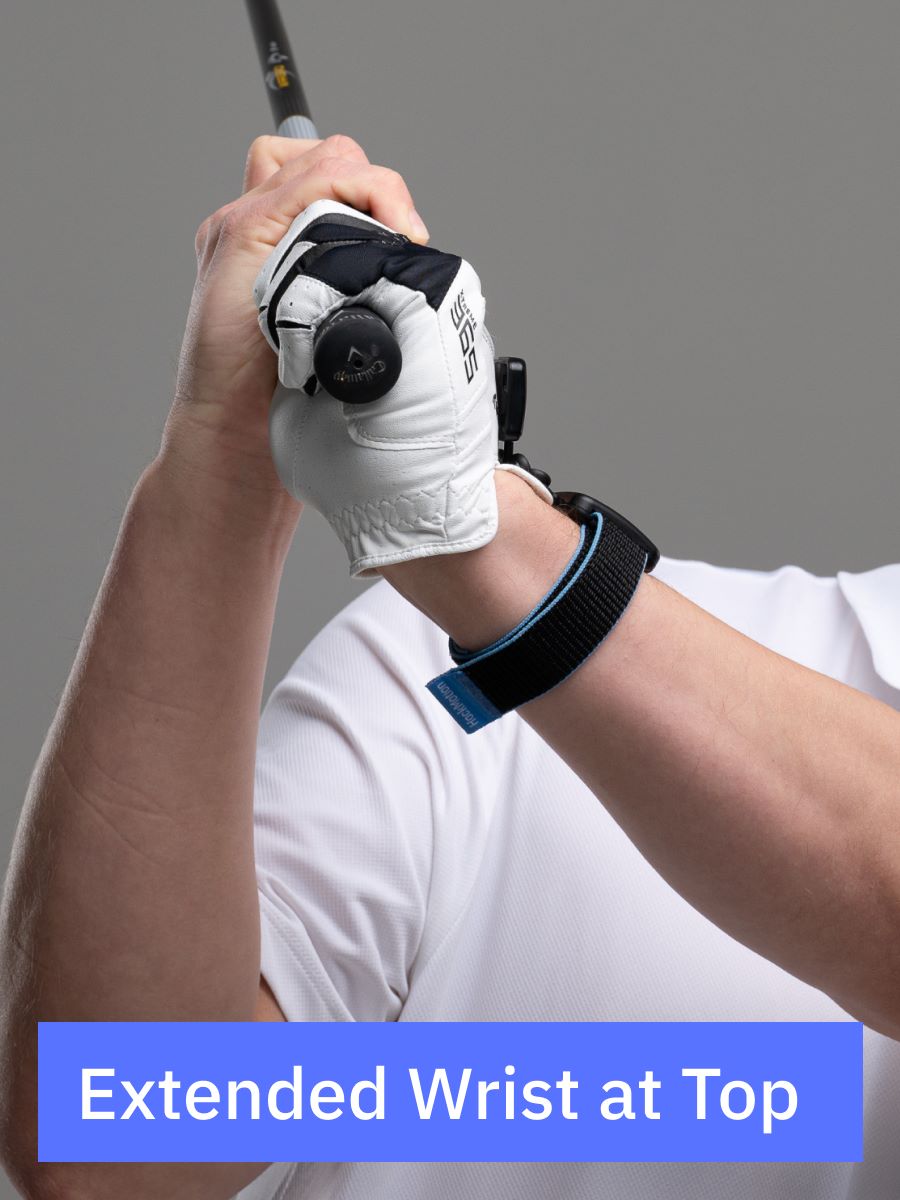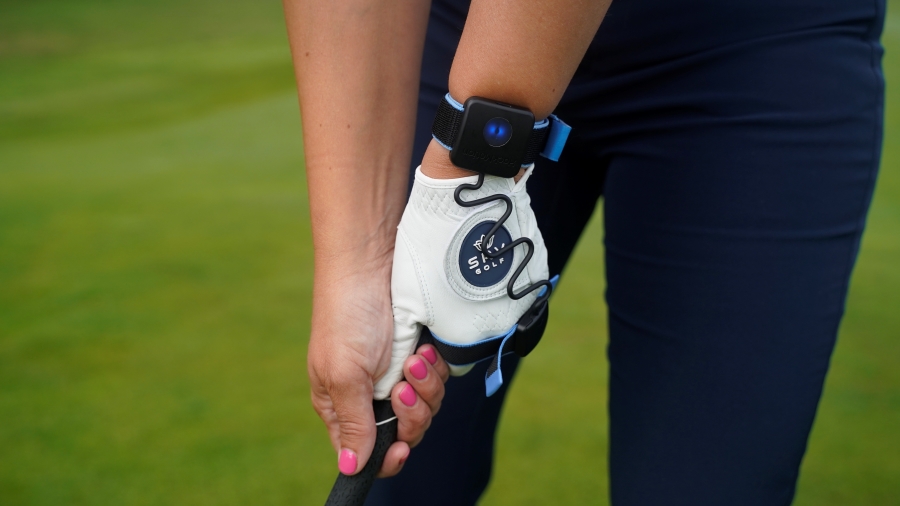Wrist Hinge With the Driver: What Changes From Irons and How to Train It
Most golfers know wrist hinge matters, but it’s mostly talked about with irons and wedges.
With the driver, things are a little different. The club is longer, the swing is faster, and the consequences of even a small hinge mistake show up quickly.
The bottom line is the fundamentals of wrist hinge don’t actually change for the driver. However, there are adjustments with timing and feel that do need to change with the driver in hand.
This guide breaks down how the driver wrist hinge compares to irons, and a few of our favorite drills to help you dial in your driver and get better off the tee.
Wrist Hinge with the Driver (Key Takeaways)
- Wrist hinge works the same across all clubs – radial deviation plus a flatter lead wrist near the top.
- The driver exaggerates small hinge mistakes, especially lead-wrist extension.
- The hinge may feel later with the driver due to the longer shaft.
- A flat or slightly flexed lead wrist at P4 is essential for controlling the face.
- HackMotion provides instant feedback on the hinge at the top, in transition, and at impact.
Prefer watching? Check out this video on the wrist hinge in the golf swing by Rob Cheney.
Contents
Do You Hinge Your Wrists the Same With the Driver as Irons?
The wrists in the driver and iron shots have the same hinge, but the process and pattern are a little different.
The actual hinge pattern, radial deviation on the backswing, and a flatter or slightly flexed lead wrist at the top, stay the same no matter what club you’re swinging.
But with the driver, two things change:
1. The hinge often feels later.
Because the club is longer, golfers tend to sense the hinge blending into the takeaway more gradually, rather than happening early.
2. A small wrist error becomes a big ball-flight problem.
With the driver’s low loft and higher speed, even a slight amount of extension at the top can open the face several degrees. So an exaggeration or poor timing on the wrist hinge can lead to larger problems than you’ll see in the irons.
Common signs your driver wrist hinge needs work:
- High-right ball flight.
- Heel contact.
- Over-the-top transition.
- Early release.
- “All arms” downswing.
Want to better understand how your wrist hinge affects your full swing? Check out Slow Motion Driver Swing for a visual breakdown of proper wrist and body sequencing.
The Most Common Wrist Hinge Mistakes With the Driver
Wrist hinge with the driver is less about the amount of hinge and more about the stability of it.
These are the patterns that most often appear in golfers who struggle with face control and consistency off the tee.
- Hinging Too Early: Hands hinge before the body rotates, lifting the club and steepening the backswing.
- Too Much Radial Deviation: Over-hinging makes the club too vertical, narrowing the arc and encouraging heel strikes.
- Lead-Wrist Extension at the Top: A cupped wrist opens the face and creates the classic slice pattern.
- Passive Wrists (“No Hinge”): Lack of hinge makes the swing arm-dominant, reduces speed, and destabilizes the face.
How to Create the Correct Wrist Hinge With the Driver
The last thing you’ll want to do with a driver swing is exaggerate the wrist hinge. The goal is to be more controlled.
Following this sequence and checking your progress with HackMotion should help you get comfortable with the proper wrist hinge with your driver.
Here’s the simple sequence that works for most golfers:
- Start your takeaway mostly with body rotation, not your hands.
- Let the hinge build gradually until the shaft reaches parallel.
- As you approach the top, feel the lead wrist flatten slightly.
- Keep that structure as the downswing starts.
- Deliver the club with rotation, side bend, and extension not an early throw with the wrists.
If you’re working on improving your tee shots, make sure to also read How to Hit Driver Consistently — it covers setup, tempo, and face control tips that pair perfectly with your wrist hinge training.
Driver Wrist Hinge Drills
One of the easiest ways to work on your wrist action with your driver is to practice drills.
Each of these drills will help you feel what your wrist should be doing throughout the driver swing. You’ll get a better idea of how they work and what you’ll need to focus on with the wrist hinge.
The drills below are part of our Free Driver Blueprint Course. To see the full course with more driver tips and training drills, click here.
Alignment Stick Drag Drill (Train Lead-Wrist Stability Into Impact)
This drill works for irons as well, and it teaches you how to maintain lead-wrist flexion through impact and deliver the driver with body rotation instead of a hand flip.
Alignment Stick Drag Drill – Step by Step:
- Place an alignment stick at an angle on the ground behind your trail foot.
- Set up normally with a small amount of lead-wrist flexion.
- Drag the stick along the ground as you move into impact.
- Keep pressure on the back of the stick, no flipping.
- Push your hips forward and maintain the side bend as your arms extend.
- Hold the final position with the lead wrist still flat.
Split-Hands P6 Speed Drill (Build Downswing Speed + Wrist Structure)
The split hands drill helps you develop faster hand-path speed in early transition while stabilizing wrist angles, a major power source for the driver.
Split-Hands P6 Speed Drill – Step by Step:
- Hold an alignment stick with your hands split about shoulder-width.
- Start with the stick horizontal (P2/P6 position).
- Make a full backswing.
- Pull the stick down to P6 as fast as you can, then stop it instantly.
- Repeat until you feel a natural weight shift and bracing.
- Move to your driver when the motion feels stable.
HackMotion Top-of-Swing Wrist Hinge Drill
The most important driver hinge checkpoint. Trains a flat or slightly flexed lead wrist at the top, critical for controlling the face and reducing slices.
HackMotion Top-of-Swing Wrist Hinge Drill – Step by Step:
- Put on your HackMotion sensor and open the top-of-backswing drill.
- Make a slow backswing and pause at the top (P4).
- Check your wrist reading: flat is ideal, extension opens the face.
- Adjust until the app shows you’re in range.
- Repeat several reps to calibrate “feel vs. real.”
- Add slow-motion swings with the same wrist structure.
- Progress to half-speed drivers.
Final Thoughts
The driver doesn’t require a different wrist hinge; it requires a more precise one. The longer shaft and faster speed make wrist structure at the top and during transition more important than ever.
Use your HackMotion and these drills to stabilize your hinge, control the clubface, and build a driver swing that produces consistent contact and predictable ball flight.
